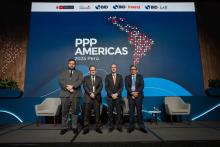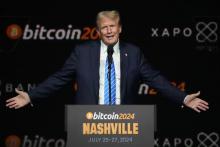The government of Juan Manuel Santos is not the first to try to reach an agreement with the guerrillas to end a conflict that spans five decades.
Below is a chronology of the peace processes that several Colombian governments have attempted with leftist guerrillas to end a violent conflict that spans five decades:
1981
The government of former liberal president, Julio César Turbay, created a peace commission to begin talks with the guerrillas. Former president Carlos Lleras Restrepo, who had the mission of leading the process, resigned with the argument that he was not allowed to establish contacts with the insurgency.
1982
The then conservative president, Belisario Betancur, began a peace negotiation with the Revolutionary Armed Forces of Colombia (FARC).
1984
The Betancur government and the FARC signed the La Uribe Agreement, which included the bilateral ceasefire, the suspension of kidnappings, and the opening of political spaces for the guerrillas. The process failed and was broken in 1987.
1988
The liberal president, Virgilio Barco, begins peace talks with the FARC, but the extermination at the hands of far-right paramilitaries of thousands of militants of the leftist Patriotic Union party, linked to that guerrilla, prevents progress.
Barco also begins dialogues with the M-19 guerrilla and issues an amnesty law.
1990
The Barco government signs a peace agreement with the M-19 that hands over its weapons, reintegrates into civilian life and becomes a political force.
1991
The then president César Gaviria begins talks with the FARC and the National Liberation Army (ELN) in the capital of Venezuela that later move to Tlaxcala, in Mexico. In 1992 the trial broke down due to the murder of a former minister kidnapped by the guerrilla.
In that same year, the guerrillas of the Popular Liberation Army (EPL), the indigenous group Quintín Lame and the Revolutionary Workers' Party (PRT) demobilized after peace agreements.
1993
During the Gaviria Government, the members of the Socialist Renewal Current, a dissident of the ELN, reintegrated into civilian life and handed over their weapons.
1998
President Ernesto Samper's government grants political status to the ELN in an effort to reach a peace agreement. There were also meetings with that rebel group in Spain and Germany that did not prosper.
The conservative candidate, Andrés Pastrana, wins the presidency of Colombia with the promise of starting a peace dialogue with the FARC to end the internal conflict. The then president withdraws the Military and Police Forces from an area of 42,000 square kilometers - twice the size of El Salvador - to serve as headquarters for the negotiations.
1999
The process with the FARC begins, the third formal attempt to achieve peace with that guerrilla. The dialogues were held in the midst of the confrontation and broke off in February 2002.
During the Pastrana Government, rapprochements were also maintained with the ELN, without achieving concrete progress.
2002
During the government of President Álvaro Uribe, who launched a military offensive against the guerrillas with the support of the United States, dialogues began with the ELN in Cuba.
Between 2004 and 2005 there was facilitation from Mexico and in 2007 an attempt was made to reestablish the process with that rebel group in Venezuela with the mediation of President Hugo Chávez, but once again the approaches failed.
2012
President Juan Manuel Santos announces at the beginning of September that his Government and the FARC signed a framework agreement that establishes a procedure, a roadmap, to advance in peace negotiations that will begin in the first half of October in Oslo, Norway, and then they will continue in Cuba.
The top commander of the FARC, Rodrigo Londoño, alias Timoleón Jiménez or "Timochenko", declared himself optimistic about the negotiation process.










